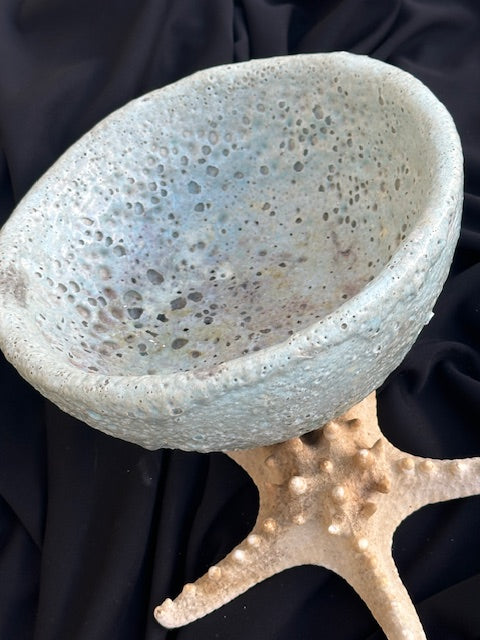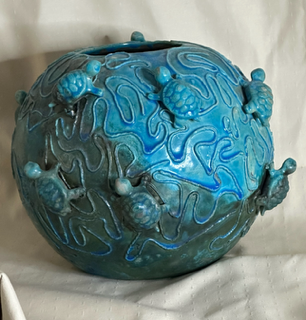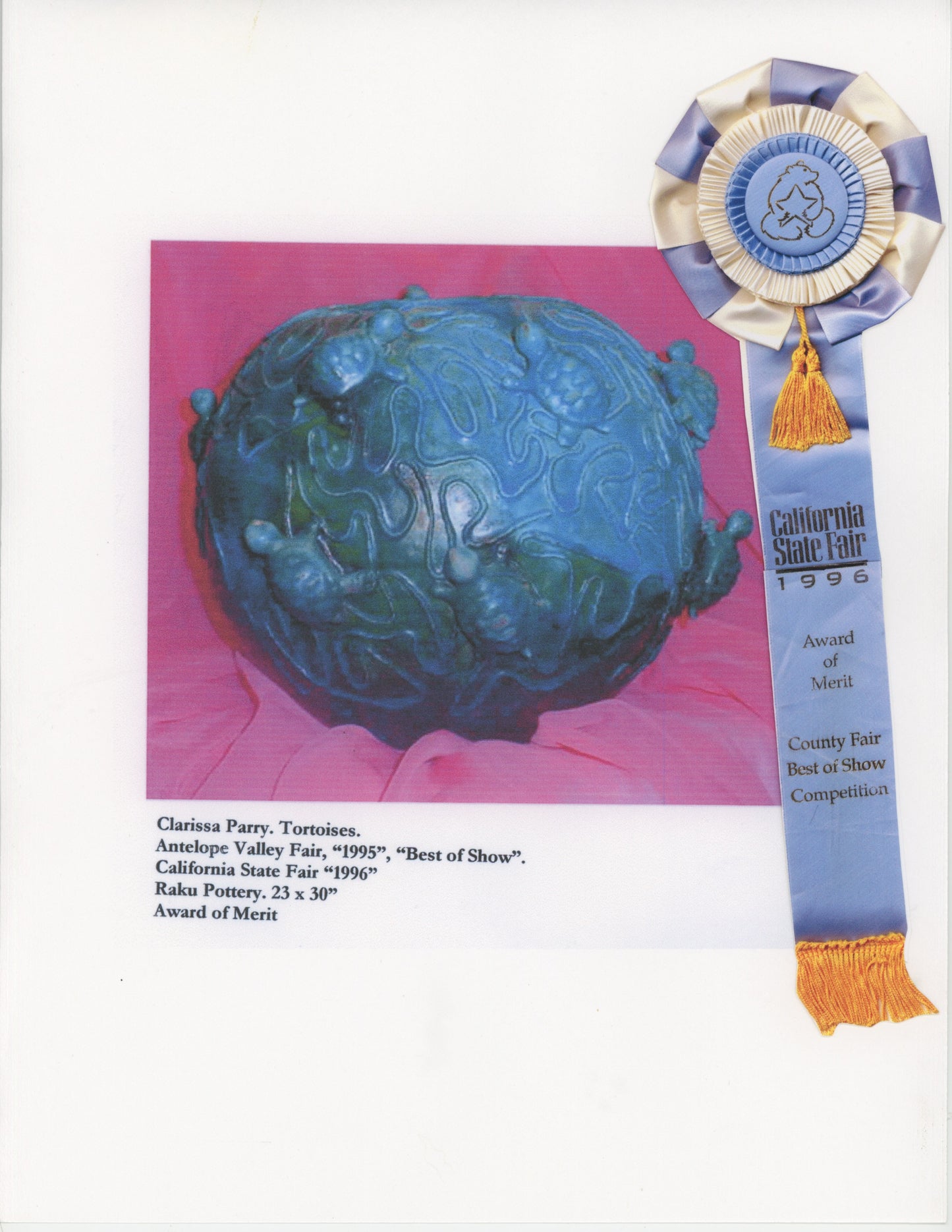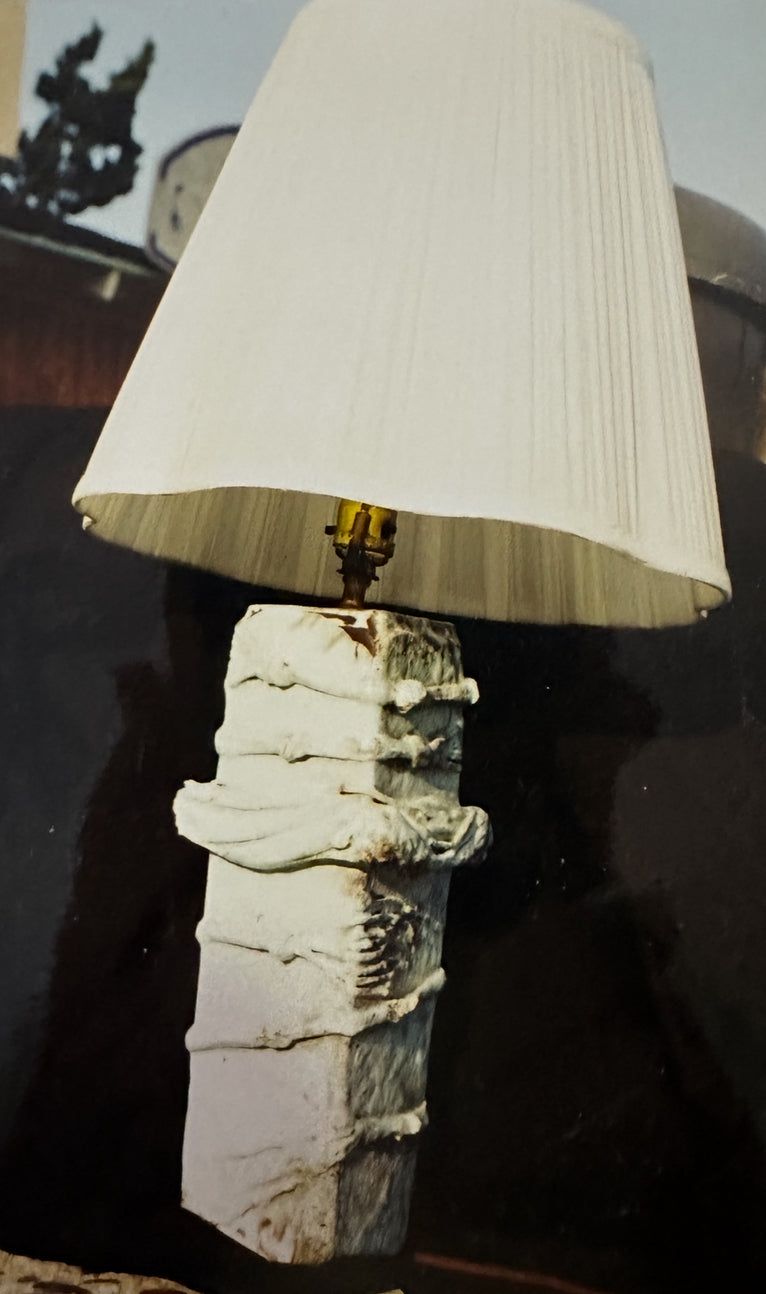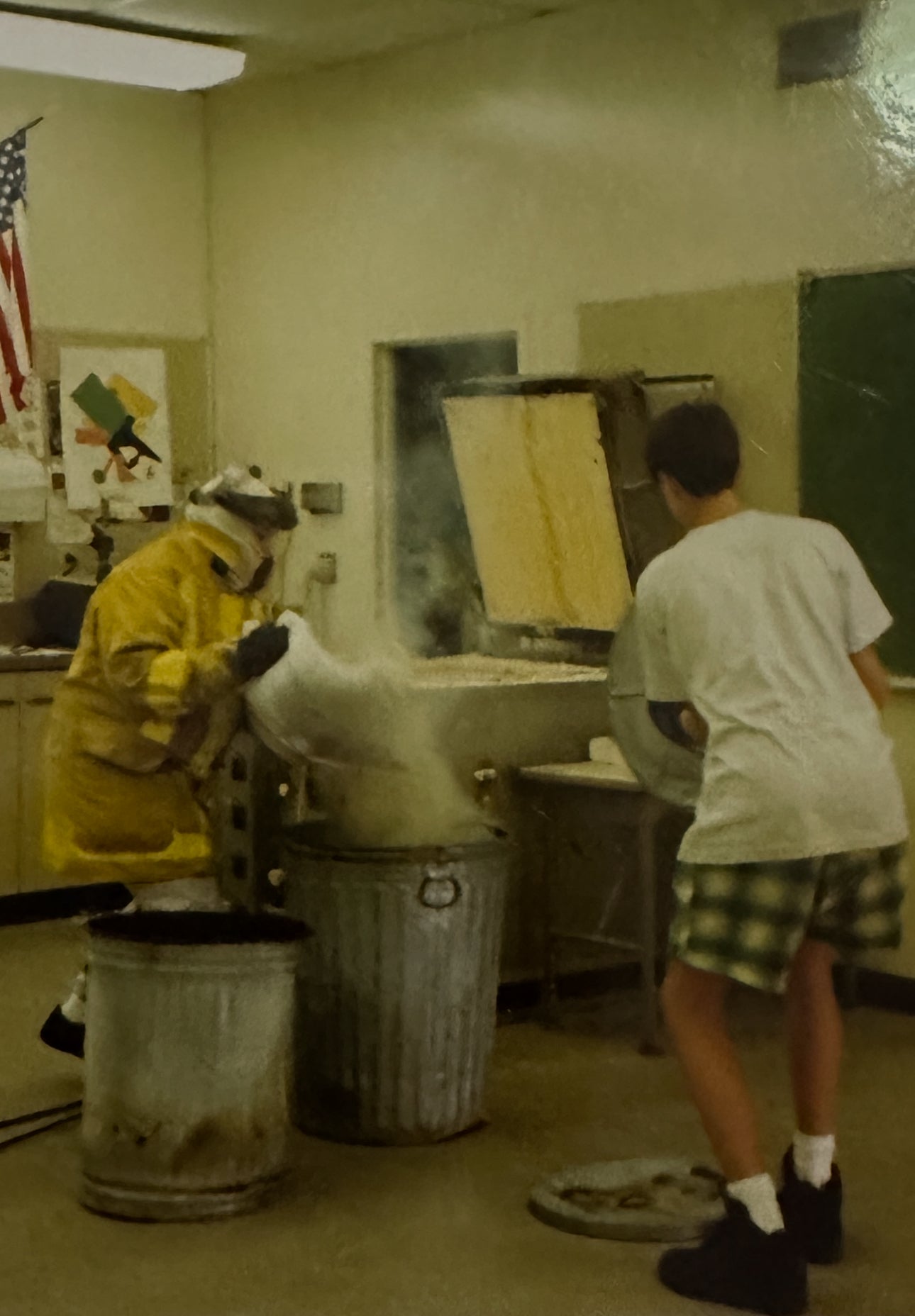1
/
of
7
"Mother, Daughter & Granddaughter Collaborating Art Team"
Raku Lamps & Bowls
Raku Lamps & Bowls
Regular price
$0.00 USD
Regular price
Sale price
$0.00 USD
Quantity
Couldn't load pickup availability
©"Raku, Lamps & Bowls, 1995, Clarissa.Vanessa.Kierah
Raku pottery is defined by its unique, unpredictable firing process where glazed red-hot ceramics are removed from the kiln and placed in combustible materials, leading to crackled glazes, metallic sheens, and vibrant, distinctive patterns . This technique, originating from Japanese tea ceremony traditions, results in porous, hand-shaped, and often brightly colored wares, though its unpredictability means no two pieces are exactly alike.
-
Key Characteristics of Raku Pottery-
Unique Decorating:Once the piece that was created from Raku clay dries slowly overnight, 100% cotton strings or fabric's can be soaked in the same Raku clay slip and draped on the piece in an artistic flow. Then the piece is left to totally dry for it one time bisque firing. After the piece has cooled, the glaze can be applied and placed back into the kiln only to bring it up to a red-hot temperature to be placed into a reduction chamber with combustibles to create unique effects and finishes. Our favorite was to use dried cow manure as cows have three stomaches and if it has eaten high quality grains, then the golds and coppers show up in the final piece.
-
Key Characteristics of Raku Pottery
-
Crackled Glaze:The rapid cooling and reduction process causes the glaze to develop a network of fine cracks, called a "crazed" or "crackle" glaze.
-
Metallic Effects:Some glazes, especially with copper, can achieve metallic, iridescent, or shimmering finishes.
-
Unique Patterns:Placing hot pieces in combustible materials like sawdust creates black smoke and carbon deposits, resulting in organic patterns, metallic flakes, or even horsehair-like markings on the surface.
-
-
Share
